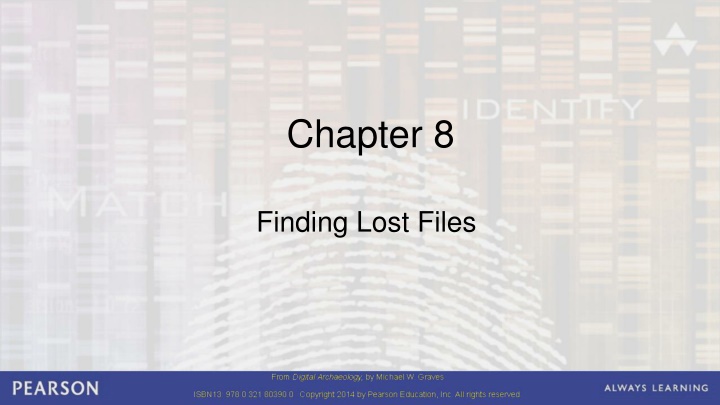
Data Recovery: From Deleted Files to Slack Space
Learn how deleted files leave traces behind, the concept of slack space and unallocated space, and techniques like data recovery and data carving to retrieve lost data from storage devices.
Download Presentation

Please find below an Image/Link to download the presentation.
The content on the website is provided AS IS for your information and personal use only. It may not be sold, licensed, or shared on other websites without obtaining consent from the author. If you encounter any issues during the download, it is possible that the publisher has removed the file from their server.
You are allowed to download the files provided on this website for personal or commercial use, subject to the condition that they are used lawfully. All files are the property of their respective owners.
The content on the website is provided AS IS for your information and personal use only. It may not be sold, licensed, or shared on other websites without obtaining consent from the author.
E N D
Presentation Transcript
Chapter 8 Finding Lost Files
Old Files Never Die Deleting a file doesn t erase data Even a wiped file may leave behind artifacts Remnants of old files may remain in slack space or unallocated space Temporary files may still exist or be recoverable Some files aren t deleted, but rather intentionally hidden
OS File Recovery Deleting a file sends it to the Trash or Recycle Bin File is simply renamed and moved to a hidden folder Deleting the file from Recycle marks the space used by the file as available (but does not erase data) Using a WIPE utility overwrites the data on the medium with random characters
What is Slack Space? Hard disks are divided into clusters of 4 to 32KB If a file does not fill a cluster, the remainder of the cluster is not overwritten, nor is it available Slack space also exists between partitions on a physical disk Utilities such as Slacker can harness all this space into a usable file system
What is Unallocated Space? When a disk is formatted, each cluster is identified and mapped When a file is created or copied to the system, the file system marks the clusters it occupies as allocated When a file is removed from Recycle, the clusters aren t erased, but merely marked as unallocated Unallocated space can hold a lot of data
Recovering Deleted Files Specialized utilities read the file system metadata and identify clusters where files once lived If the space has not been overwritten, the files can be recovered intact Mark space as allocated Give the file a new name Disk editing utilities allow the residual data from partially overwritten files to be copied to a new file
Data Carving Files in unallocated space can be retrieved by data carving All bits stored on the medium beginning with a file header and going through to an end of file marker are copied to a new file Few utilities can salvage files stored on noncontiguous clusters
Data Carving Tools Carver Foremost Scalpel
















